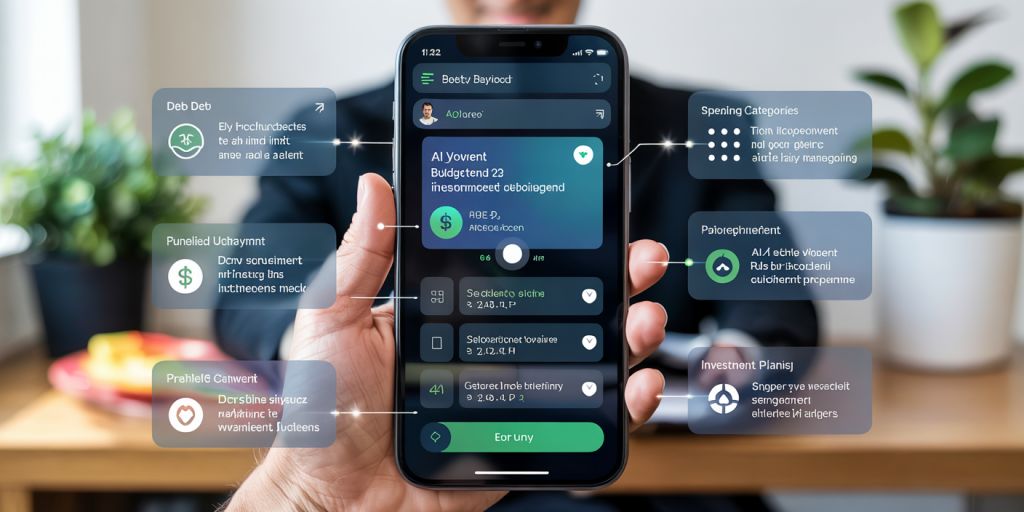Budgeting for the Lazy: Automation Hacks That Save You Thousands
Anúncios
Managing personal finances can often feel overwhelming, especially for those who dislike tracking expenses or juggling spreadsheets. Yet, budgeting remains one of the most effective ways to build savings and reduce debt. Fortunately, in the digital age, automation offers an effortless approach to manage finances without constant manual input. This article explores how automating your budgeting process can revolutionize your financial health, backed by practical examples, data, and proven hacks that save you thousands.

Why Traditional Budgeting Fails the Lazy
Traditional budgeting methods require consistent discipline, involving logging every purchase, calculating expenses, and adjusting spending habits. For many people, this approach quickly turns into a chore. According to a 2023 survey by the National Endowment for Financial Education, 60% of adults fail to maintain a budget primarily due to time constraints and complexity.
Anúncios
Moreover, manual budgeting often suffers from human error, forgetfulness, and emotional bias. These factors can cause inaccurate expenses reporting and tense relationships with money. One case study from Ramsey Solutions highlighted that only 40% of participants stick with manual budgeting after six months, citing the tedious upkeep as the main reason.
Instead of resisting the challenge, adopting automated systems allows even the most reluctant individuals to maintain financial discipline effortlessly. Automation removes the tiresome step of constant monitoring, enabling users to make smarter money moves without daily stress.
Anúncios
Automating Expense Tracking: Save Time and Gain Control
The first and most crucial step in budgeting is tracking where your money goes. Apps such as Mint, YNAB (You Need A Budget), and Personal Capital automatically sync with your bank accounts, credit cards, and bills to categorize transactions in real-time. This instant data capture eliminates manual data entry and provides an accurate overview of spending patterns.
For instance, users of Mint report saving an average of 5-7 hours per month that would otherwise be spent on financial record-keeping. This gained time can instead be invested into building additional income streams or simply enjoying life.
These tools also alert you when you approach budget limits or detect unusual charges, providing peace of mind. A practical example comes from Jane, a 29-year-old marketing professional, who used automatic categorization to reduce her discretionary spending by 17% within three months without altering her lifestyle drastically.
| Feature | Manual Budgeting | Automated Tracking |
|---|---|---|
| Time Spent Monthly | 6-8 hours | Less than 1 hour |
| Accuracy | Prone to errors | Real-time and precise |
| Alerts and Notifications | None | Custom alerts for overspending |
| Emotional Bias | High | Reduced |
Automated apps often integrate with bill payment systems, further reducing late fees. The Consumer Financial Protection Bureau (CFPB) found that enrolled users who automate bill payments are 70% less likely to incur late payment penalties.
Automate Savings: The “Set and Forget” Strategy
One of the most efficient methods to build savings is automating transfers into dedicated accounts. Setting up automatic transfers shortly after paycheck deposits ensures consistent contributions without temptation to spend the funds elsewhere.

Popular platforms like Digit and Qapital analyze spending habits and automatically move small sums of money into savings accounts based on what you can afford—without causing an impact on your daily cash flow. Digit reported that their users save an average of $2,700 annually without consciously trying.
People often hesitate to save due to inertia or lack of discipline. Automated saving bypasses the “out of sight, out of mind” mindset, making money accumulation passive but steady. Consider Mark, who automated $100 per week into a high-yield savings account. Over five years, this small weekly outflow compounded into nearly $30,000, including interest—money he admits he would have otherwise spent on impulse purchases.
The key here is to automate incremental savings that are barely noticeable but add up over time. This approach outperforms most manual budgets, which rely heavily on willpower.
| Saving Approach | Manual Savings Proportion | Automated Savings Proportion |
|---|---|---|
| Consistency | 50% | 90% |
| Average Annual Saved | $1,200 | $2,700 |
| Behavioral Reliance | High willpower needed | Minimal effort |
Automating Debt Payments: Avoid Fees and Credit Damage
Debt is one of the biggest obstacles to financial freedom. While many are aware of the importance of timely payments, life’s distractions can cause missed or late payments, leading to fees and credit score damage. Automating debt repayment helps eliminate this risk.
Tools like Tally, Unbury.me, and even standard bank bill pay options enable scheduling of monthly payments to credit cards, loans, and mortgages. These apps can prioritize high-interest debts and adjust payment amounts according to surplus cash flow, optimizing debt reduction.
A notable real-life case involved a couple who automated excess payments towards their credit card debt. Within 18 months, they shaved off $8,500 in interest and paid off the card completely—something that manual payment scheduling failed to achieve due to inconsistent payments.
According to Experian, missed payments account for nearly 35% of credit score drops in the US. Automation not only ensures punctual payments but can help users improve their credit health by maintaining a consistent repayment history.
| Debt Management Metric | Manual Payments | Automated Payments |
|---|---|---|
| On-time Payment Rate | 65% | 98% |
| Average Interest Paid | $1,200+ | $700 |
| Credit Score Risk | High | Low |
Using Budgeting Bots and AI for Personalized Financial Advice

Advancements in artificial intelligence have brought AI-driven financial advisors and bots into the everyday consumer’s hands. These platforms analyze your spending, income, and goals to provide tailored recommendations without requiring human financial planner fees.
Apps like Cleo and Plum use chatbots to nudge users towards better money habits, answering questions such as “How much did I spend on dining last month?” instantly. These insights empower users, making budgeting both interactive and less daunting.
Moreover, AI algorithms can automatically adjust budgets based on changing circumstances, such as fluctuating incomes, seasonal expenses, or big upcoming bills. This dynamic approach is far more effective than static monthly budgets.
Empirical data from a 2022 Deloitte study reveals that 48% of millennials are more likely to follow budgeting advice when provided by an AI assistant due to its convenience and real-time adaptiveness.
For example, Chloe, a freelance graphic designer, integrated AI into her financial apps, which prompted optimizations that saved her $400 a month by identifying redundant subscriptions and suggesting more cost-effective options.
Future Perspectives: The Evolution of Budgeting Automation
As technology continues to evolve, budget automation will become even more seamless and intelligent. Upcoming innovations include voice-activated financial management, cross-platform AI that integrates investments, taxes, and retirement planning within a single ecosystem, and more sophisticated predictive analytics that anticipate expenses before they occur.
Blockchain technology promises greater transparency and security in financial transactions, potentially enabling automated smart contracts for bills and loans, further reducing human error and delay.
Robotic Process Automation (RPA) combined with AI may soon allow complete end-to-end management of personal finances without any manual interaction. Imagine apps that automatically rebalance your portfolio, manage your emergency fund, and optimize your tax filing while you focus on your career or hobbies.
While complete automation might raise privacy and security concerns, the trend clearly indicates a future where budgeting is not only for the financially savvy but accessible effortlessly to everyone, regardless of their interest or expertise in finance.
—
Budgeting for the lazy is not about neglecting your financial health—it is an intelligent strategy leveraging technology to reduce effort and increase results. Automating expense tracking, savings, debt repayment, and integrating AI advisors empowers individuals to save thousands without traditional friction. This hands-free approach breaks down barriers to sound financial habits and sets the stage for a financially secure future, even for the most budget-averse. Take advantage of these automation hacks today and watch your savings grow with minimal effort.
Post Comment